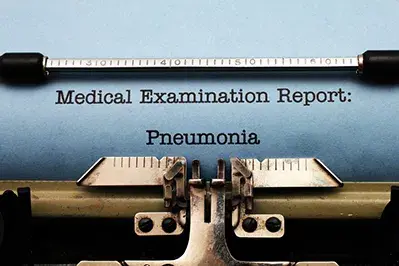An inflammatory condition that affects the lung tissue, pneumonia can be caused by bacterial infections, inhalation of irritating chemicals, inhalation of stomach contents, or infections by uncommon organisms. Pneumonia can be community-acquired (CAP), health care-associated (HCAP), hospital-acquired (HAP), or ventilator-associated (VAP).
The key to proper medical coding for pneumonia is having clinical documentation in the medical record that describes the type of pneumonia or its causal factor. Defining how sick patients truly are will ensure appropriate code assignment, which in turn, will improve care reporting, outcome measures, and reimbursement. However, there are many challenges involved in aligning coding and clinical documentation.
For example, HCAP is a condition with major documentation issues. If a patient is diagnosed with HCAP, the physician needs to specify a probable or suspected organism that caused the condition. Pneumonia guidelines from the Infectious Diseases Society of America (IDSA) specify that the organisms responsible for causing HCAP in the majority of cases are gram-negative bacteria and Staphylococcus species. However, according to a report in the ACP Hospitalist, the organism responsible for causing the pneumonia is usually not mentioned in the clinical documentation. The reason, according to the author, is that physicians mistakenly believe that a suspected, but unconfirmed, condition based on solid clinical grounds should not be documented.
The truth is that clinical judgment is an important professional skill that CMS specifically recognizes for inpatient documentation and for coding of the highest level of diagnostic specificity. Of course, the patient must have been given a full course of treatment for the suspected condition as if it had been confirmed. In ICD-10, if an underlying disease caused the pneumonia, that information should also be documented. The ICD-10 coding classification provides several code categories as well as combination codes for pneumonia, including a code for unspecified “gram-negative” pneumonia.
ICD-10 pneumonia code categories:
- J12, viral pneumonia
- J13, pneumonia due to Streptococcus pneumoniae
- J14, pneumonia due to Hemophilus influenzae
- J15.-, bacterial pneumonia
- J16.-, pneumonia due to other infectious organisms
- J17, pneumonia in diseases classified elsewhere
- J18.-, pneumonia, unspecified organism
Combination codes include:
- J15.0, pneumonia due to klebsiella pneumoniae
- J15.1, pneumonia due to pseudomonas
- J15.20, pneumonia due to staphylococcus, unspecified
- J15.211, pneumonia due to methicillin susceptible Staphylococcus aureus
- J15.29, pneumonia due to other staphylococcus
- J15.6, pneumonia due to other aerobic gram-negative bacteria
- J15.7, pneumonia due to Mycoplasma pneumoniae
- J15.8, pneumonia due to other specified bacteria
- J15.9, unspecified bacterial pneumonia
If the physician does not document the suspected organism or organisms causing HCAP, it can have a serious impact on quality reporting. Under the current coding guidelines, HCAP patients will be classified as having ‘simple’ pneumonia, with low severity of illness and low mortality, low complication rates, low cost of care, and a short expected length of stay. This will increase complication and re-hospitalization rates – indicating very poor quality of care, and affecting measurement of outcomes and reimbursement.
Professional coders in reliable medical coding companies will assign codes for pneumonia as specifically as possible, based on the physician’s documentation. They will review the entire medical record for clarity and consult the physician for clarifications if the documentation is unclear, ambiguous, or inconclusive. While medical coding outsourcing is a feasible option to ensure compliance and proper reimbursement, it is up to the physician to ensure good documentation practices to avoid miscoding and undercoding, especially for a complex condition like pneumonia.


